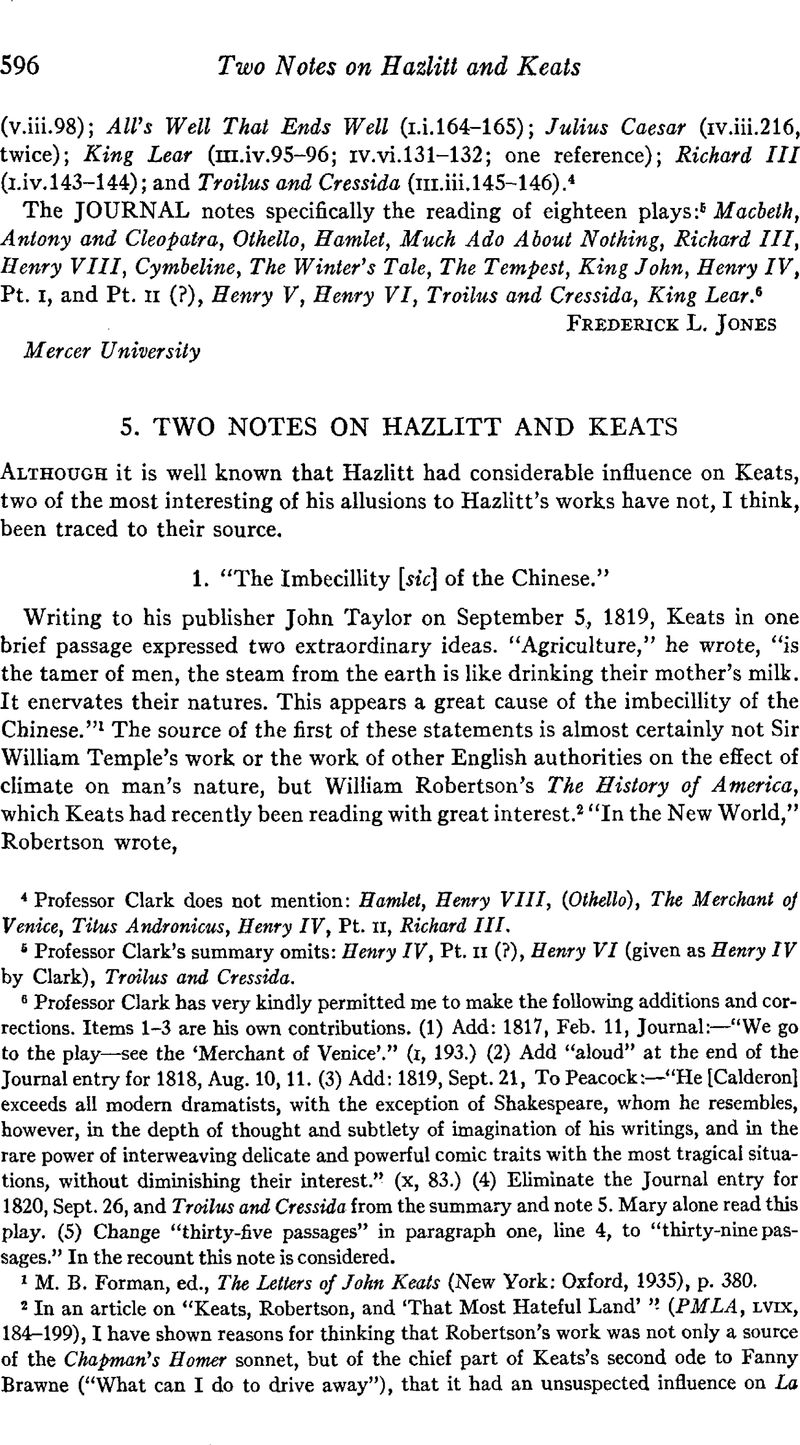Published online by Cambridge University Press: 02 December 2020

1 M. B. Forman, ed., The Letters of John Keats (New York: Oxford, 1935), p. 380.
2 In an article on “Keats, Robertson, and ‘That Most Hateful Land‘”(PMLA, lvix, 184–199), I have shown reasons for thinking that Robertson's work was not only a source of the Chapman's Homer sonnet, but of the chief part of Keats's second ode to Fanny Brawne (“What can I do to drive away”), that it had an unsuspected influence on La Belle Dame sans Merci, and that it was used in the revised form of Hyperion, which Keats was working on in September, 1819.
3 (2 vols., Dublin: Whitestone, etc., 1777), i, 343–345.
4 Ibid., i, 255.
5 Ibid., i, 257.
6 Ibid., i, 347–348.
7 “The Sentimentalism of Goldsmith, ”PMLA, xlviii (December, 1933), 1169.
8 (London: Henry Fisher, n.d.), i, 352–353.
9 Forman, ed. cit., p. 48.
10 A. R. Waller and Arnold Glover, edd., Collected Works of William Hazlitt (12 vols., London: J. M. Dent, 1902), i, 46.
11 By “imbecillity ”Keats seems to mean both foolishness and a degree of actual physical degeneration, as the term was used in medicine. Foolishness might be the result of degeneration.
12 Forman, ed. cit., p. 157.
13 Waller and Glover, ed. cit., i, 124.
14 Forman, ed. cit., p. 298.